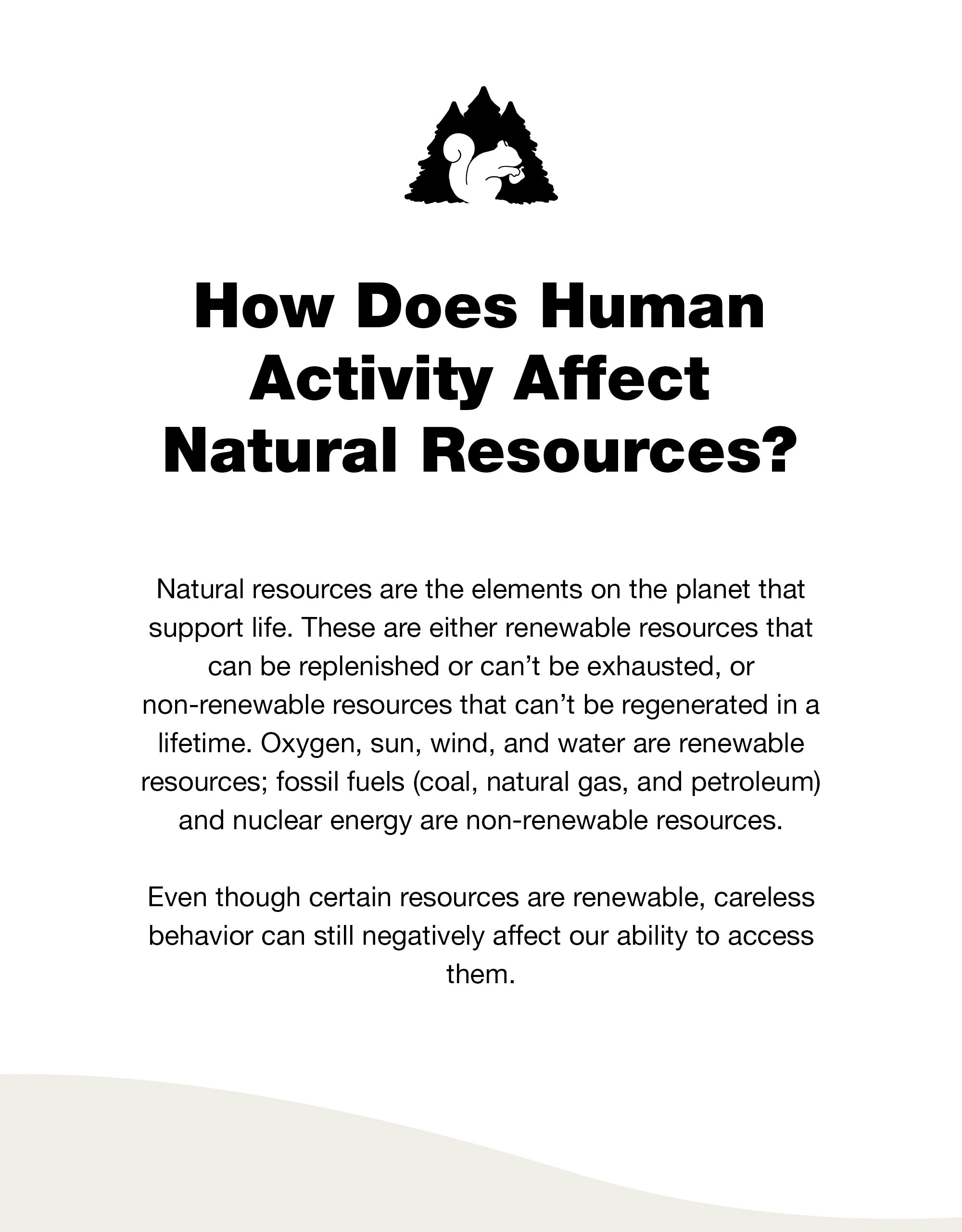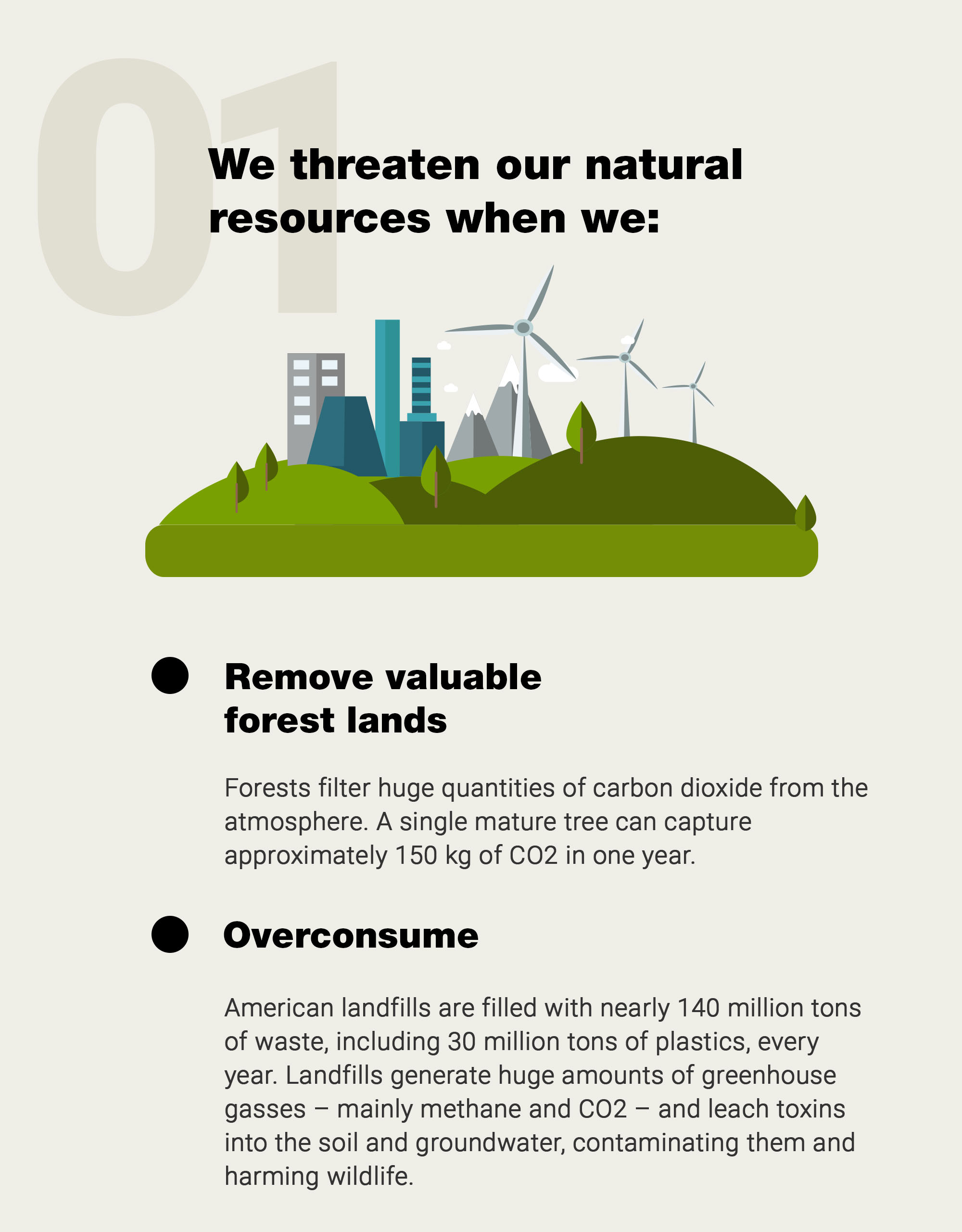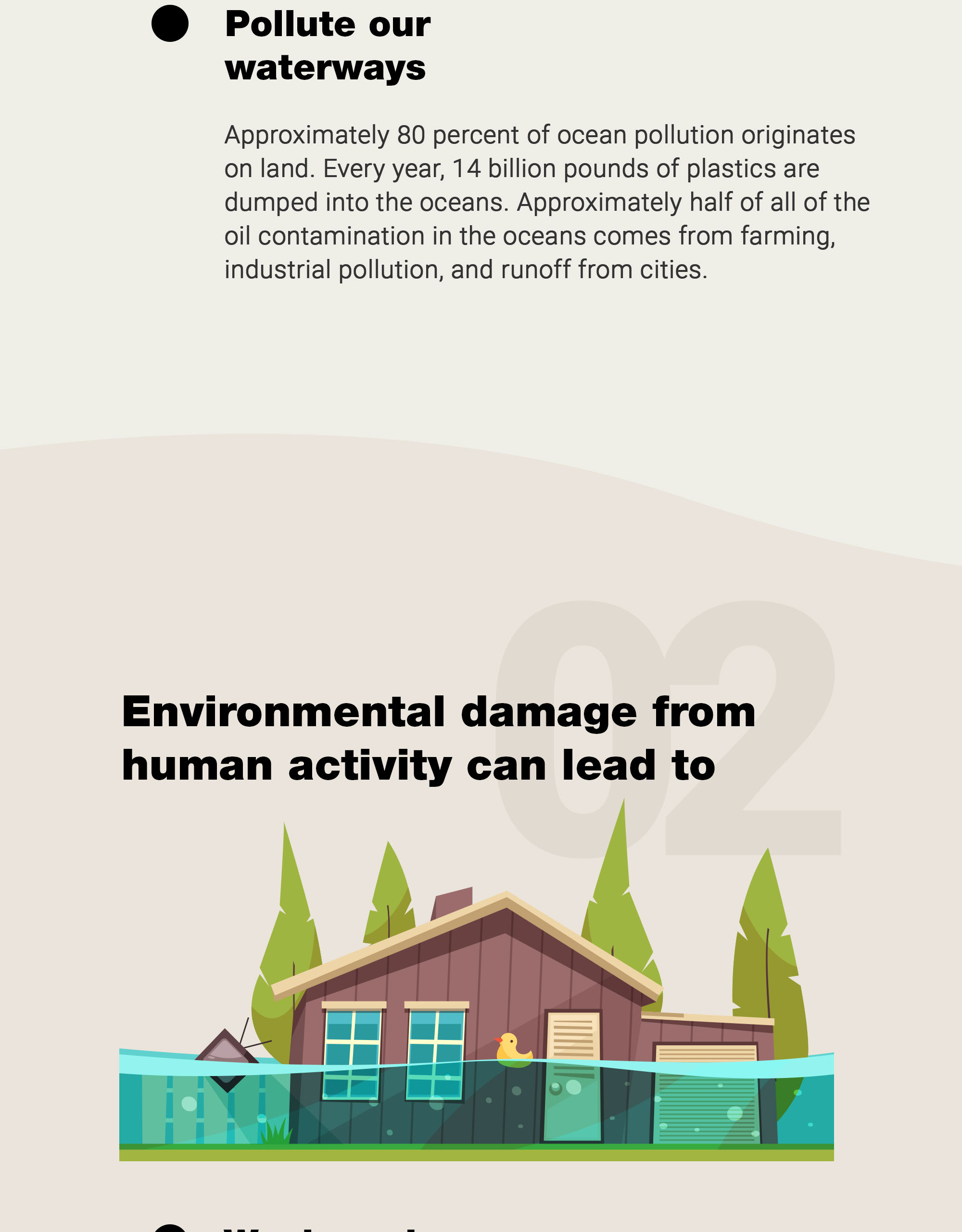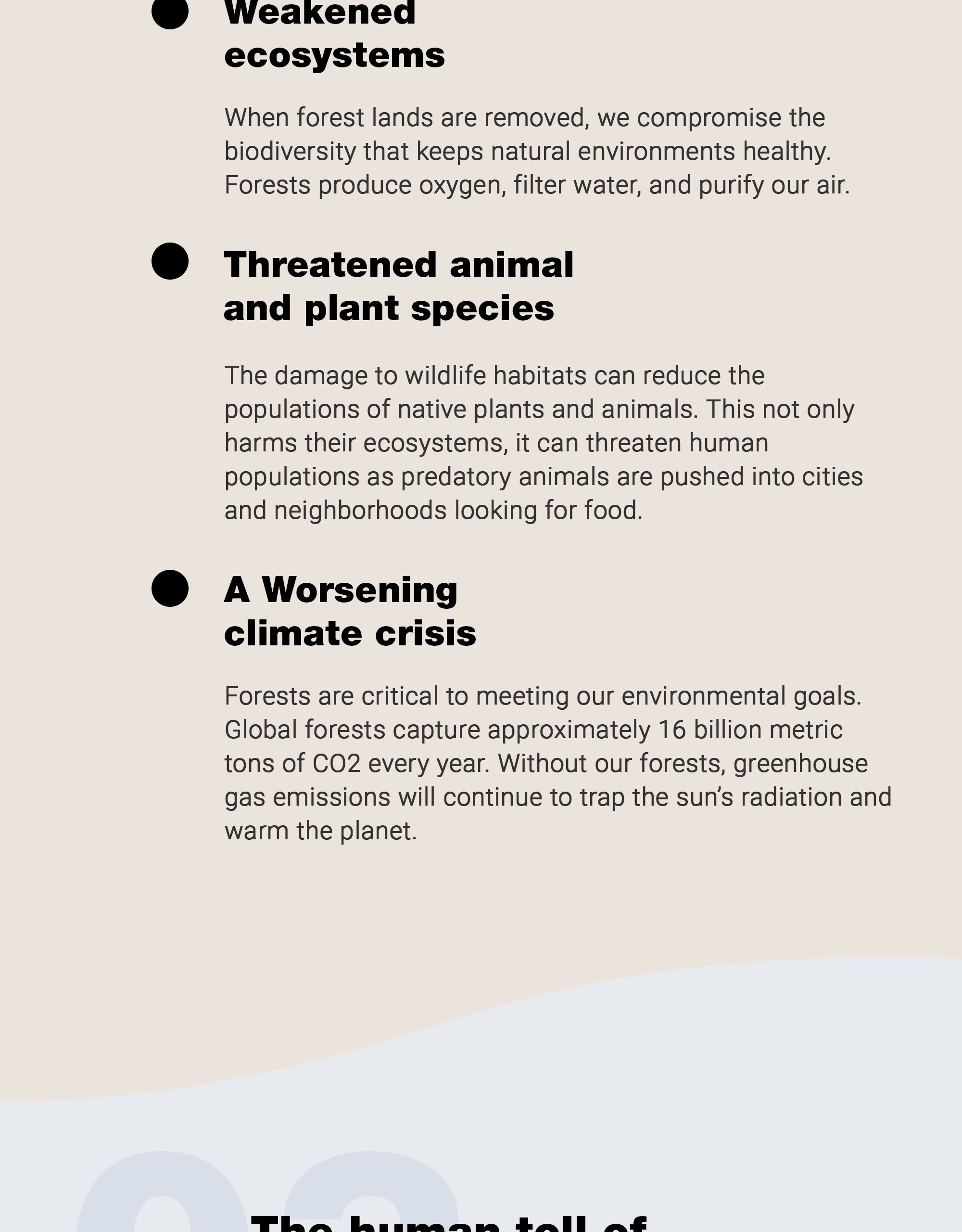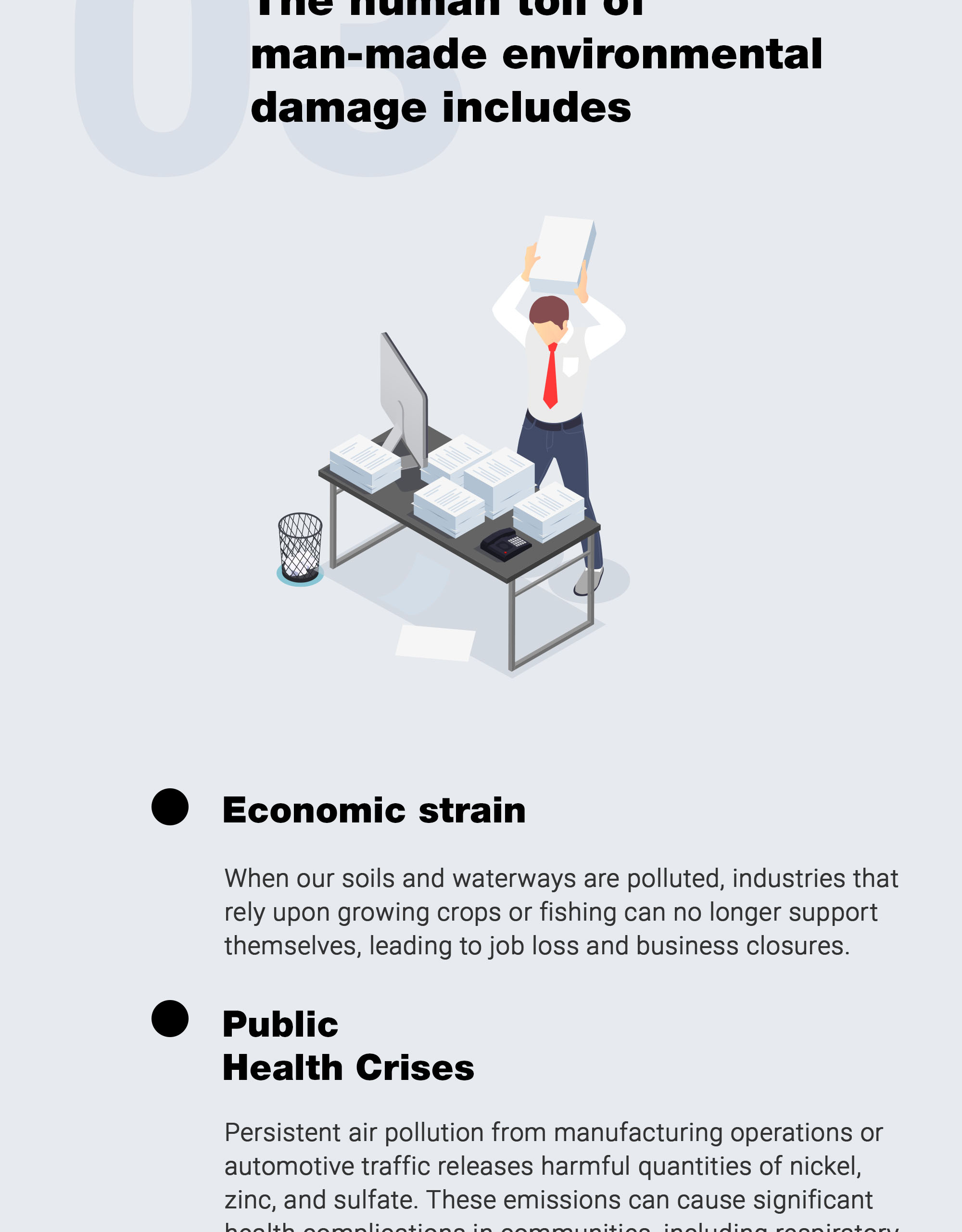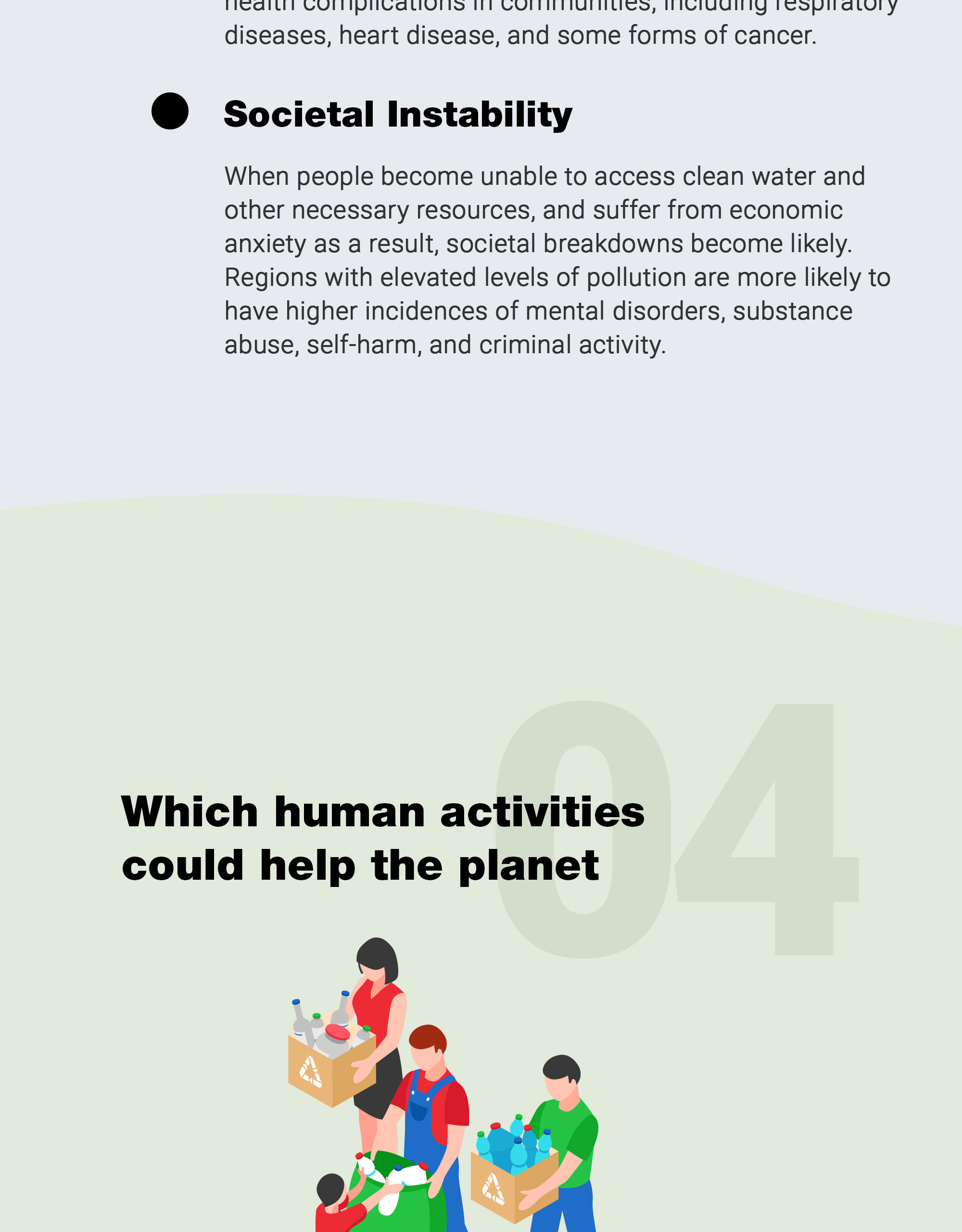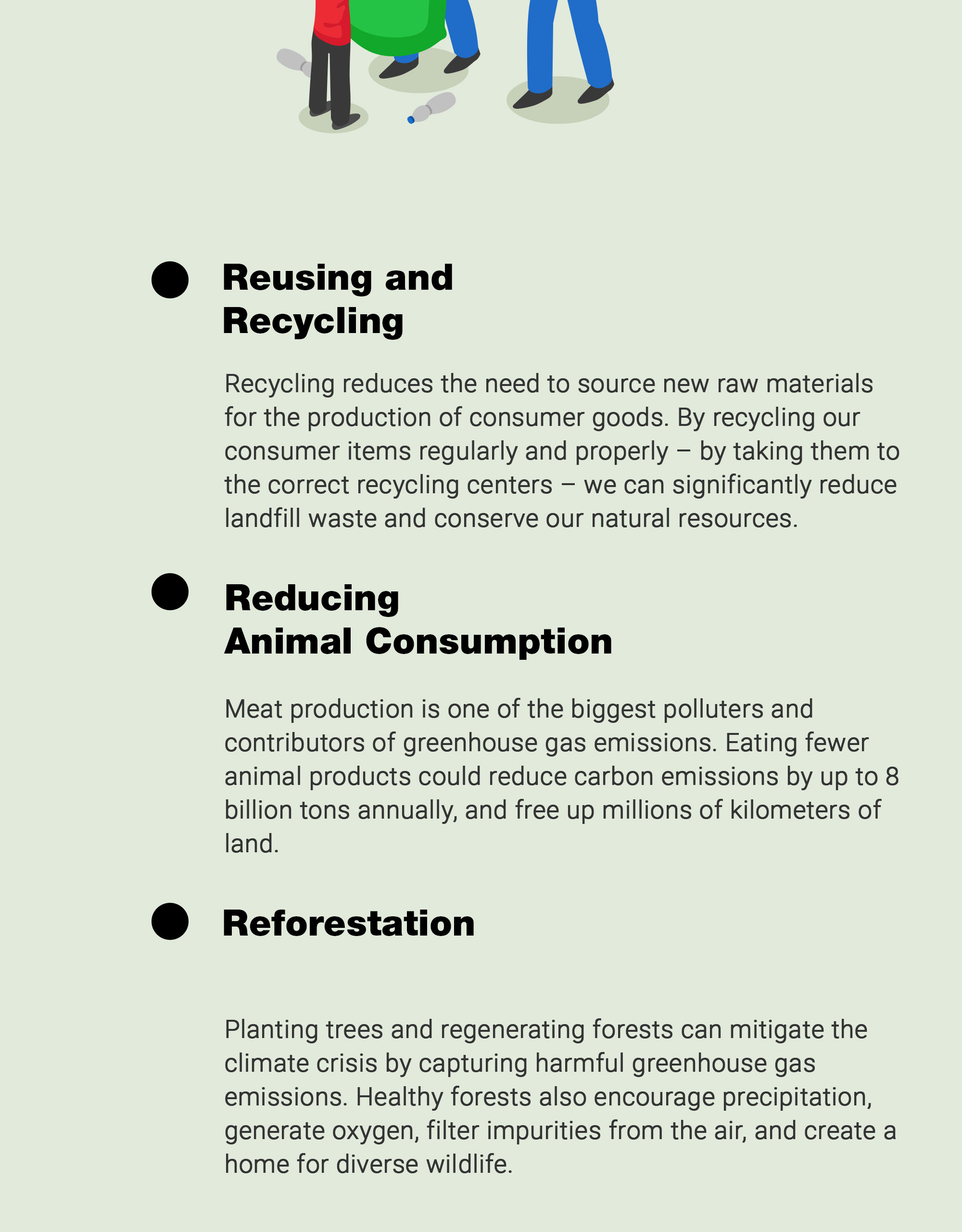How does human activity affect the planet?
Everything we eat, wear, and use comes from natural resources that were grown or extracted. Some of these natural resources are renewable, which means that they either recur naturally, can be regenerated, or cannot be used up. natural resources include water, wind, sunlight, and vegetation. But other resources are non-renewable, like fossil fuels used to fuel cars and generate electricity.
When humans are careless about growing and extracting natural resources, it becomes difficult to access them, and the lack of access to life-sustaining resources can threaten our health. Over time, the inability to access natural resources causes us to suffer from economic difficulties. For example, if farmers can’t grow crops because their lands were damaged from bad farming practices, those farmers won’t be able to earn a living. This can lead to trouble when people become scared and desperate.
Some of the ways we damage our ability to access natural resources include:
- Overfishing: When we remove so many fish that the population can’t regenerate.
- Aggressive mining: When mining practices cause negative, widespread change to an ecosystem, leading to erosion, water contamination, and soil contamination.
- Overconsumption: Overconsuming goods leads to waste that overwhelms landfills and spreads non-biodegradable garbage into our waterways.
But before we dive further into the different ways our activities are currently impacting the Earth, let’s take a look at one example of how our actions impacted our ability to access natural resources, and triggered the greatest environmental crisis in American history.
The Dust Bowl
What do you think about when you think about the 1930s? Probably black and white movies, gangsters like Bonnie and Clyde, and old-fashioned swing band music. However, the defining event of the period between 1929 and 1939 is what is known as The Great Depression.
You’ve probably heard about The Great Depression in school. Millions of people were out of work and unsure how they would get their next meal. Tens of thousands of people started building shacks made of tin and cardboard in large public parks and other vacant lots because they couldn’t afford to stay in their homes. While the reasons for the extreme economic downturn were complex, one of the major contributing factors was what is commonly known as The Dust Bowl, and it was a direct result of how human activity affected — and destroyed — the environment.
How Human Interactions with the Environment Caused the Greatest Economic and Ecological Disaster in U.S. History
One of the most extraordinary natural disasters of the previous century was an entirely man-made event. The Dust Bowl of the mid-20th century was the outcome of decades of terrible agricultural practices. Farmers would move to regions in the Dakotas, Kansas, Nebraska, Arkansas, Oklahoma, and other states in the Midwest and begin to clear the grasses so that they could plant wheat crops. They did this without recognizing the environmental necessity of deep-rooted prairie grasses, and the result was catastrophic.
The ecosystem of the Great Plains is unique — it experiences years of consistent annual rainfall, but also long drought periods that don’t fit a particular cycle. This is why the grasses in the region have evolved to be extremely deep-rooted — they can hang on to moisture deep in the soil during long dry periods and keep the soil anchored. The act of plowing the natural grasslands of the Great Plains region of the United States removed the protective grasses, exposing the topsoil, leading to environmental calamity.
The Dirty Thirties
The topsoil dried out severely, and dry winds carried incalculable quantities of dust in the air to regions sometimes thousands of miles away. The dust storms were so thick that they blocked the sun, turning day into night. The dust piled up in people’s houses and buried their cars. Livestock in the farming areas were suffocated and killed, their stomachs, mouths, and throats filled with dirt. The dust entered people’s lungs and caused deadly illnesses and respiratory infections. The dust storms were so thick, oppressive, fast, and common that farm families living in the Great Plains regions often had to tie ropes from their barns to their front doors to find their way back home if a dust storm suddenly hit while they were outside. These “black blizzards” sometimes reached as far as New York City, and the dust even found its way to some ships at sea in the Atlantic. By 1933, black blizzards were occurring at a rate of nearly once per week.
Environmental Refugees
An estimated half-million people were forced out of their homes in the Dust Bowl region and fled to different regions in the U.S., largely the West. These migrants to larger cities were often derisively called “Okies,” and faced tremendous economic and social struggles. Residents and political officials viewed the displaced migrants as uneducated, diseased parasites who would drain public resources and steal jobs from locals. The camps of impoverished refugees dotted the California landscape, and sheriffs and police forces attempted to stop them from entering the state at the California border. Fruit growers in California set up cheap, squalid shanties for the desperate migrant workers, and these shanties bred disease, which spread throughout the camps. Local officials blamed the migrants, not the landowners. In 1933, California passed the Indigent Act, which was used to legally prevent poor people from entering the state.
Though the drought in the Great Plains that launched the Dust Bowl officially ended in 1939, the environmental scars still linger, and droughts continue to affect the region with varying degrees of severity. While the Dust Bowl is the most sudden and remarkable example of how human activity affected the Earth, there are nonetheless countless ways our actions fundamentally change the planet.
How Human Activity Affects the Earth
Throughout the course of human evolution, human actions have always affected the planet. Our ancestors’ search for tools, food, shelter, and the desire to control the environment have shaped every ecosystem in which humans have lived. Land modifications for agricultural purposes and the development of housing and commercial structures have changed landscapes in dramatic fashions — from rerouting rivers, to clearing forests, to using explosives to tunnel through mountains. Even activities that don’t directly change the landscape have altered the environment in significant ways, as the proliferation of automobiles and commercial transportation has led to the reduction of air quality in densely populated regions throughout the world.
Human manipulation of the planet and its resources has led to the virtual disappearance of untouched natural lands — many scientists believe that there aren’t any places left on the planet that haven’t been either occupied by or affected by humans. The spread of human civilization and technological innovations have caused several irrefutable environmental consequences.
The Human Population Explosion
Overpopulation has been a sociological and environmental concern for centuries. In the late 18th century, an English scholar and economist named Thomas Malthus wrote that human overpopulation could lead to the exhaustion of necessary resources and an insubstantial food supply. In the mid-20th century, a book called “The Population Bomb” by biologist and Stanford University professor Paul R. Ehrlich was published, sounding alarm bells about the planet’s ability to support an exploding human population.
Our desire to accommodate massive growth in the human population has been at the core of numerous environmental issues in the previous and current centuries. Our agricultural and distribution innovations have been a double-edged sword. Firstly, humans are producing higher volumes of food than the planet could naturally support. Sufficient and economically accessible food production relies upon the aid of pesticides, fungicides, herbicides, chemical fertilizers and technologies that ensure a continual water supply, as well as cheap labor. Secondly, the abundance of food allows for even greater population growth and longer lifespans, necessitating the increasing production of the essential resources — housing, clothing, medical supplies and services, and consumer goods — providing additional environmental strain and causing tremendous amounts of waste.
Agricultural Production
Agricultural advancements have been remarkable. Innovation and ingenuity created a system that allows humans greater control over their access to resources. Early in human history, the discovery of agricultural techniques led to humans settling in the same regions for the long term rather than continually moving as hunting and gathering opportunities diminished. The transplantation of native species of plants to new ecosystems caused environmental changes, creating new food webs and damaging previous ones.
Livestock also caused massive environmental changes. Grazing animals like sheep and cattle change the landscape significantly by consuming native grasses and foliage, and farmers’ need to protect livestock from predators like coyotes and wolves led to their being hunted to near extinction in some regions, leading to major ecological imbalances.
The abundance of cattle throughout the U.S. is also associated with elevated amounts of atmospheric carbon dioxide, a major greenhouse gas.
While industrial-level agricultural practices throughout the previous century have contributed to numerous environmental crises, the technologies and campaigns developed to counter the damaging ecological effects have increased awareness of the dangers of continued large-scale industrial farming, causing greater interest in supporting sustainable agriculture and smaller, local farmers.
Widespread Pollution
Air pollution can be caused by numerous natural factors. Volcanoes erupt and release gases and ash into the atmosphere that can linger for months or years. Gasses from volcanic eruptions, like sulfur dioxide, can be fatal to human and animal populations. Volcanoes don’t even have to erupt to create environmental toxins — gases can discharge from inactive volcanoes and poison the animals and humans in the region. In 1984, a volcano in Lake Monoun in Cameroon experienced a limnic eruption, an event that saturated the lake with carbon dioxide, which was then released into the atmosphere and killed nearly 40 people. Two years later, a nearby volcano in Lake Nyos had its own limnic eruption, killing 1,700 people. In May of 2021, Mount Nyiragongo in the Congo erupted and spewed lava to the nearby town. Because the volcano is close to a lake — Lake Kivu — it is possible that a limnic eruption could occur.
But natural disasters aren’t the primary cause of pollution. One of the most significant and enduring effects of human behavior on the planet is the pollution generated by our activities. Emissions from automobiles, manufacturing processes, and agricultural practices interfere with the health of plants, animals, and humans. Poor air quality triggers public health issues that cause entire communities to develop physical symptoms.
Sometimes, the toxins released by human industrial activities cause significant harm within a very short period of time. The deadliest case of industrial air pollution occurred in 1984 in Bhopal, India, when a pesticide plant accidentally released methyl isocyanate gas into the atmosphere, which poisoned the nearby town and killed thousands of residents within only a few days. More than a half-million people were injured.
While most emissions released by factories and other industrial interests don’t achieve such catastrophic outcomes so quickly, the slow release of toxins into the environment can have damaging effects on the environment and human population over time. Populations continually exposed to poor air quality are more likely to suffer from respiratory illnesses like asthma, heart disease, and cancer.
Pollution doesn’t only affect the air — water pollution is a widespread problem affecting oceans and waterways throughout the world.
Like air pollution, water pollution can occur due to natural events. Petroleum seeps are natural phenomena where stores of oil and hydrocarbons in the Earth spill out and pollute lakes and oceans, leaving so much tar that it occasionally washes up on shores. However, like air pollution, water pollution is overwhelmingly due to human activity.
Some of the biggest water polluters are power plants. Power plants that burn coal to generate electricity also generate tons of toxic ash that are dumped into waterways. This pollution contaminates aquatic habitats and poisons drinking water for humans in nearby communities.
The Removal of Forest Cover
Deforestation is one of the most damaging effects of human activity. Global forests are essential to life on Earth — they filter the air and water and capture the tons of carbon emissions we emit into the atmosphere, mitigating much of the environmental damage human activities cause. However, forests are under continual threat from human activity, and the planet loses approximately 250 million acres of forest every year to deforestation through wildfires, drought, and intentional land clearance, down from the high of 500 million acres between 2011 and 2015. Less than half of the forest lands removed every year are being replaced.
Forests are extremely vulnerable to human activity because they both provide resources we need desperately, and stand in the way of our population growth. In addition to food and water, humans need shelter and housing. This need to build structures has required land clearing on a massive scale, not only to provide space for development, but also to source the materials for building the structures.
Reforestation efforts are critical to preserving the health of the planet. While human activity has been the cause of nearly all of the most calamitous environmental damage, humans also have the capability to take corrective action. Though humans have strained our planet’s ecosystems tremendously, by working to restore our natural forest covers and other green spaces we can start to incrementally rebuild the health of the planet, making it better able to support future generations of people.
Our natural spaces are our greatest resource, and when we neglect to preserve them — like when we destroyed the grasslands on the Great Plains — we can suffer devastating consequences that last for generations.
Forest Founders was established to raise awareness of human activity and the environment, and support initiatives that combat deforestation. To learn how you can support our mission to preserve and rebuild global forests, please visit our information page. To participate in tree planting projects, please register on our signup page.
